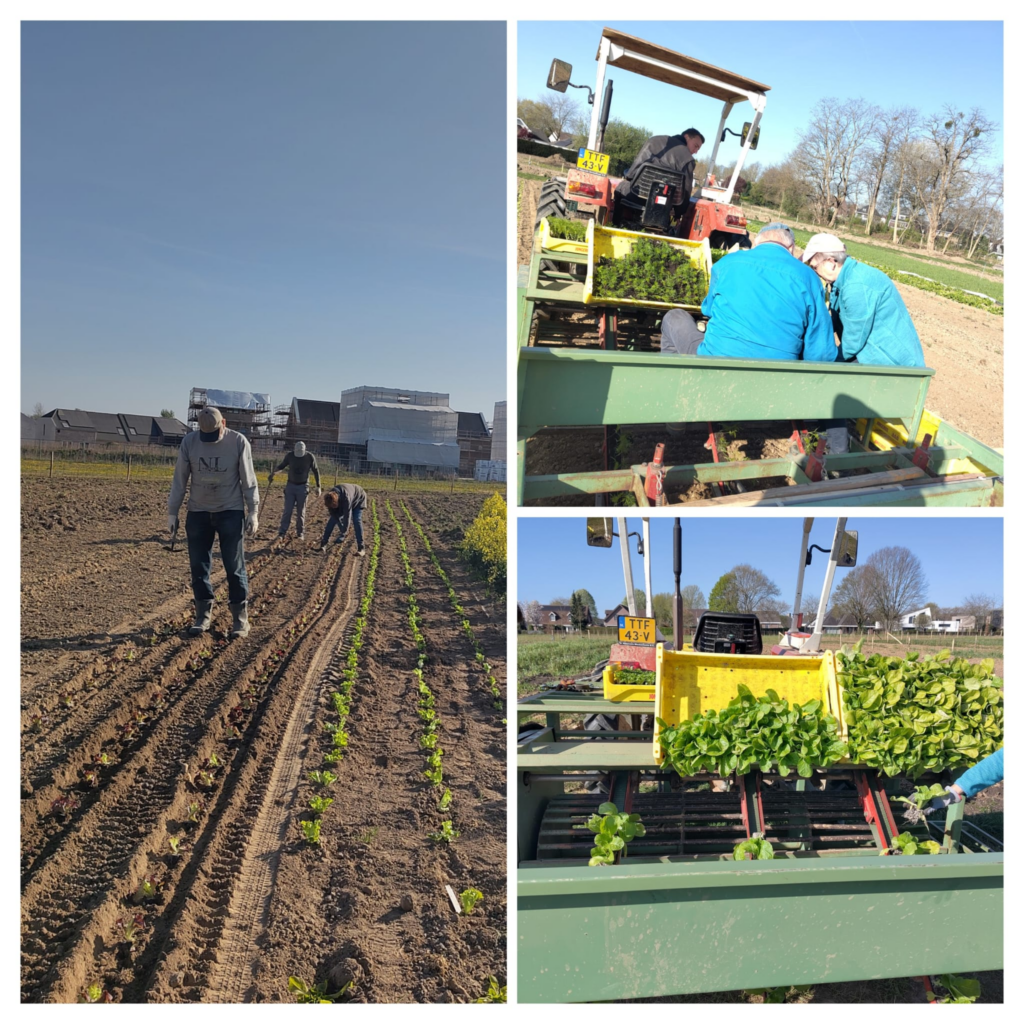Short food supply chains, local drinking water production, and recreational areas close to home—what if landscape services were optimally exchanged within urban-rural regions? This could lead to more self-sufficient areas and renewed appreciation between city and countryside. In the Circulaire Versnellers podcast, Jasper de Vries (Wageningen University & Research) and Rens de Boer (BPD) share how they’re working toward this vision in the Fertile Soils project. “By connecting supply and demand, we also contribute to regional circular systems.” (note: podcast in Dutch)
“Both cities and rural areas are facing a decline in the quality of their living environment,” says Jasper de Vries, project lead of Fertile Soils and Associate Professor of Spatial Planning at Wageningen University & Research. “Cities are expanding and struggling with air pollution, too much or too little water, and limited green space for cooling. Rural areas are under pressure from agricultural intensification, an aging population, and the loss of local amenities. What’s more, the direct exchange of goods and services between city and countryside has diminished, eroding mutual connection and appreciation. We still eat food from rural areas, for instance, but it’s produced for the global market and reaches us through that route.”
Self-Sufficient Regions
“Landscape services can help ease many of these challenges,” De Vries continues. “These are services provided by the landscape to people and/or nature—like raw materials such as wood and water, but also areas for water storage, food production, and nature for recreation. These services often originate in the countryside, but are needed in cities. By matching supply and demand within urban-rural regions, needs are met locally and stronger connections emerge. At the same time, smarter and more sustainable use of materials, energy, and space supports the development of self-sufficient regions.”
“Think of farmers selling local produce and making land available for water storage and recreation,” he says. “That benefits urban residents—food, water supply, and cooling—but it also offers farmers new revenue models and draws people to the countryside.”

One of the projects described by Rens de Boer in the podcast. Also take a look at the described proximity of urban and rural landscapes in this Google Maps example.
“Or take growing flax or hemp on land at the city’s edge that’s already been acquired for future development but not yet built on,” adds Rens de Boer, project partner and landscape advisor at BPD Area Development. “We’d love to use that for insulation material in new homes. It supports biodiversity in the area, but unfortunately, there are still too few local processors to close the loop.”
From Concept to Practice
“While the idea of landscape services is widely embraced as a solution, putting it into practice still lags behind,” says De Vries. That’s why the Fertile Soils team is developing spatial visions based on this concept and exploring what’s needed to make them reality. This work takes place in a broad consortium of researchers and practitioners and focuses on five regions: Groningen-Het Hogeland, Zwolle, Breda-Tilburg, Rotterdam-The Hague, and Amsterdam.
De Vries: “Ultimately, this should lead to design principles that can be applied in any Dutch region, and to a new planning approach that does justice to the complex challenges each region faces. It also lays a solid foundation for regional circular systems.”
A Breakthrough
De Boer is especially hopeful for deeper insight into the needs of local stakeholders. What’s really going on? And does the often-cited divide between city and countryside actually exist? Regional gatherings will be key to exploring these questions. The team is also using location theory to investigate which landscape services can best be produced and consumed in which areas—and what combinations work well or definitely don’t.
They’re also developing governance strategies to establish the necessary legal and policy frameworks, along with a value assessment system to help price landscape services and create new business models. For drinking water, that’s relatively straightforward—but for things like beautiful scenery or clean air, much less so. This work includes both deep academic research for long-term solutions and practice-based research for short-term results, in collaboration with universities of applied sciences.
De Boer expects a breakthrough: “We’re finally combining the local expertise of our project partners with all existing knowledge about landscape services—and applying it in practice, in real regions, with real money. That’s what we need to figure out what actually works. And by continuously translating our interim results into practical steps (through the applied research), we keep everyone engaged.”
| Podcast: Circulaire Versnellers How can researchers and practitioners work together to speed up the transition to a circular society? In this three-part podcast series, we explore three promising research projects tackling exactly that challenge. Each one focuses on developing new, scalable systems that better align the supply and demand of materials and services: a cooperative bank for freshwater, a digital system for managing construction and demolition materials, and spatial designs for the optimal exchange of landscape services in urban-rural regions. The research is largely embedded in real-world contexts. After all, technical solutions are often readily available—but how do we get them off the ground? It requires rethinking the value of resources and services, developing new business models, and creating the nessecary legal and governance frameworks. All perspectives are needed here, along with mutual trust and a belief in the often open-ended process. In keeping with this spirit, researchers and practitioners in this series share their lessons and experiences with fellow researchers. |
This podcast was hosted and edited by Annemieke Groenenboom and produced for the Institute 4 a Circular Society, part of the EWUU alliance.